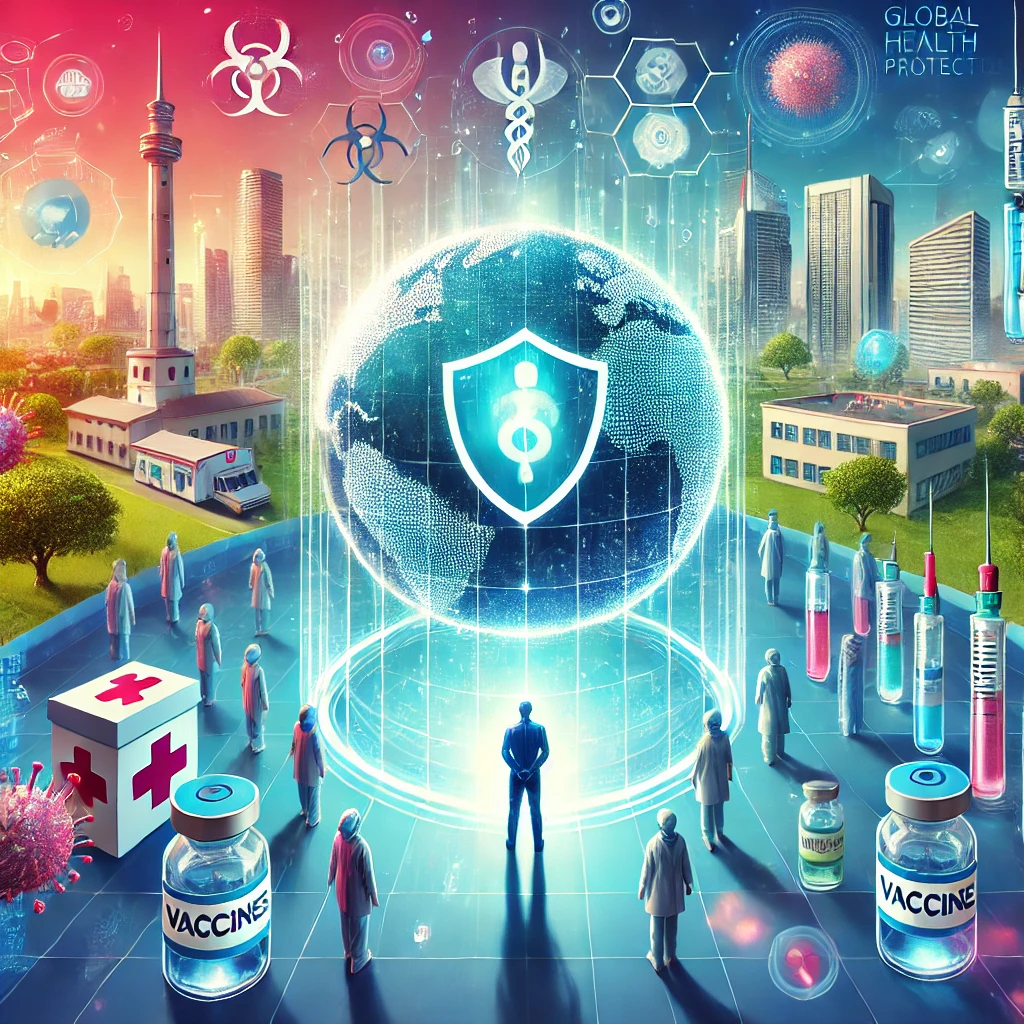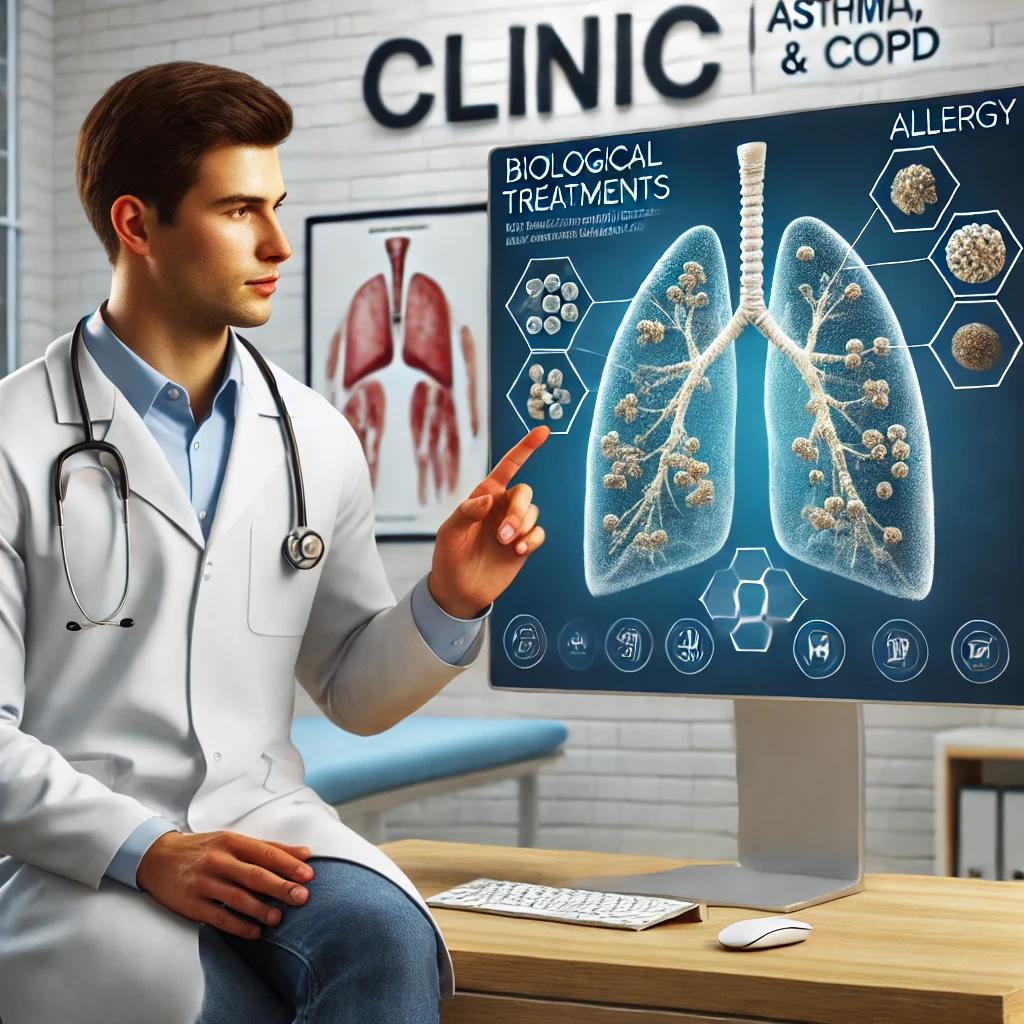Your cart is currently empty!
Month: September 2024

दीपावली: अस्थमा, COPD, और एलर्जी के मरीजों के लिए सावधानियाँ
प्रिय मरीजों,
त्योहारों का मौसम आ गया है। दशहरा और दीपावली जैसे शुभ अवसर हमें जीवन में रोशनी, खुशी और उमंग भरते हैं। लेकिन अगर आपकी सेहत की बात करें, तो कुछ सावधानियाँ जरूरी हो जाती हैं। मेरी ये बातें न सिर्फ मेरे पुराने मरीजों के लिए हैं, बल्कि उन सभी के लिए हैं जो अपनी सेहत को लेकर चिंतित हैं। आइए बात करें कि कैसे आप इन त्योहारों का आनंद लें, पर सेहतमंद भी रहें।
धुएं से सावधान
त्योहार का असली आनंद तब सच्चा होता है, जब सेहत सही होती है। पटाखों का धुआं हवा में प्रदूषक बढ़ाकर सांस लेने में परेशानी पैदा कर सकता है, खासकर अस्थमा, सीओपीडी और एलर्जी के मरीजों के लिए।
• शोध से प्रमाणित: 2016 में Sharma and Dixit द्वारा Journal of Atmospheric Pollution में प्रकाशित अध्ययन में पाया गया कि दीवाली के दौरान PM2.5 और PM10 स्तरों में 30-40% की वृद्धि होती है, जो श्वसन संबंधी समस्याओं को बढ़ाता है।“सांस की राह में हो जब धुआं,
फिर कहां से आएगा त्योहारों का मजा?”लेकिन यह कहने का मतलब यह नहीं है कि आप त्योहार नहीं मना सकते। ग्रीन क्रैकर्स का इस्तेमाल एक बेहतर विकल्प हो सकता है। ये कम धुआं और आवाज करते हैं, जिससे पर्यावरण को भी कम नुकसान पहुंचता है और आपकी सेहत भी सुरक्षित रहती है।
धुआं और एलर्जन्स का असर
प्रदूषण हवा में एलर्जन्स (जैसे परागकण, धूल) की एलर्जनिसिटी को बढ़ा देता है, जिससे सांस संबंधी परेशानियाँ बढ़ जाती हैं।
• वैज्ञानिक प्रमाण: 2015 में Beck et al. द्वारा Journal of Allergy and Clinical Immunology में प्रकाशित एक अध्ययन ने बताया कि प्रदूषण से एलर्जन्स की शक्ति बढ़ जाती है, जिससे एलर्जी और अस्थमा के लक्षण तेज हो सकते हैं।ध्वनि प्रदूषण का प्रभाव
पटाखों का तेज शोर सिर्फ मानसिक तनाव नहीं बढ़ाता, बल्कि अस्थमा और सीओपीडी के मरीजों के श्वसन तंत्र को भी प्रभावित करता है।
• शोध का निष्कर्ष: 2019 में Thompson et al. द्वारा European Respiratory Journal में प्रकाशित अध्ययन में पाया गया कि शोर से श्वसन प्रणाली में तनाव और परेशानियाँ बढ़ सकती हैं।त्वचा एलर्जी और प्रदूषण
दीवाली के दौरान प्रदूषण न सिर्फ फेफड़ों पर बल्कि आपकी त्वचा पर भी असर डालता है, जिससे खुजली, जलन और रैशेज जैसी समस्याएं हो सकती हैं।
• शोध के अनुसार: 2017 में Kim et al. द्वारा International Journal of Dermatology में प्रकाशित अध्ययन से पता चला कि PM2.5 और NO₂ त्वचा पर एलर्जी और संवेदनशीलता बढ़ा सकते हैं।पर्यावरणीय जागरूकता हर त्योहार में जरूरी
कुछ लोग महसूस कर सकते हैं कि पर्यावरणीय जागरूकता अक्सर हिंदू त्योहारों के समय अधिक चर्चा में आती है, जबकि अन्य अवसरों जैसे नए साल की आतिशबाजी या साल भर होने वाले प्रदूषण के स्रोतों पर उतना ध्यान नहीं दिया जाता। हालांकि, यह समझना जरूरी है कि पर्यावरण संरक्षण का मुद्दा सिर्फ एक विशेष त्योहार तक सीमित नहीं होना चाहिए।
चाहे वह दीवाली हो, नए साल की आतिशबाजी, या साल भर होने वाले प्रदूषण के स्रोत जैसे गाड़ियों का धुआं, सिगरेट पीना या औद्योगिक उत्सर्जन—सभी गतिविधियाँ हमारे पर्यावरण और स्वास्थ्य को प्रभावित करती हैं।
इसलिए, त्योहारों के समय पर्यावरण का ख्याल रखना सिर्फ एक जिम्मेदारी नहीं, बल्कि लंबे समय तक हमारे और आने वाली पीढ़ियों के लिए बेहतर जीवन की नींव है। हर त्योहार के दौरान हमें अपनी सेहत के साथ-साथ पर्यावरण का भी ध्यान रखना चाहिए।त्योहार से जुड़ी मेरी कहानी
हर साल इस मौसम में, मेरे पास ऐसे कई मरीज आते हैं जिनकी हालत पटाखों के धुएं या प्रदूषण के कारण बिगड़ जाती है। मैंने देखा है कि थोड़ी सी सावधानी बरतने से ये समस्याएं काफी हद तक रोकी जा सकती हैं। इस बार, मेरी आपसे यही गुज़ारिश है कि आप त्योहार की खुशियों में सेहत का ध्यान रखें और ग्रीन पटाखों का इस्तेमाल करें, जो कम धुआं और शोर करते हैं।
“सुरक्षित त्योहार, स्वस्थ जीवन!”
आपकी सेहत और भोजन की भूमिका
त्योहार के दौरान हल्का और पौष्टिक भोजन खाएं, जिसमें ताजे फल, सब्जियाँ और हाइड्रेशन पर ध्यान दें। ज्यादा तला-भुना और मिठाइयों से दूर रहें। सेहतमंद रहेंगे तो त्योहार का मजा दोगुना होगा।
समुदाय का सहयोग
आप अपने पड़ोसियों और समाज में जागरूकता फैलाएं कि हमारी छोटी जिम्मेदारियाँ दूसरों की सेहत पर असर डालती हैं। पटाखों का कम इस्तेमाल करें और परिवार के साथ प्राकृतिक और सुरक्षित तरीके से त्योहार मनाएं।
मिथक और सच्चाई
बहुत से लोग मानते हैं कि पटाखों का धुआं केवल कुछ घंटों का असर डालता है, लेकिन सच यह है कि यह कई दिनों तक हवा में बना रहता है। इन मिथकों को तोड़ना जरूरी है ताकि हम सब मिलकर सुरक्षित त्योहार मना सकें।
मानसिक स्वास्थ्य
त्योहारों की तैयारियों में तनाव न बढ़ाएं। योग और मेडिटेशन जैसी गतिविधियाँ अपनाएँ ताकि आप मानसिक रूप से भी स्वस्थ रहें। सिर्फ शरीर नहीं, मन की सेहत भी जरूरी है।
पर्यावरण के अनुकूल सुझाव
मिट्टी के दीये जलाएं, जैविक रंगों से रंगोली बनाएं और पर्यावरण को बचाते हुए त्योहार मनाएं। ग्रीन पटाखों का उपयोग कर आप पर्यावरण और स्वास्थ्य दोनों का ख्याल रख सकते हैं।
“प्रकृति से दोस्ती करें, त्योहार की खुशी दोगुनी करें।”
भविष्य की पीढ़ियों की जिम्मेदारी
आज हम अगर अपने पर्यावरण का ध्यान रखेंगे, तो हमारी आने वाली पीढ़ियाँ भी इन त्योहारों की रोशनी में सांस ले सकेंगी। आइए, त्योहार का सही अर्थ समझें और जिम्मेदारी से मनाएं।
सारांश: त्योहार कैसे मनाएं और सेहत भी बनाए रखें
• ग्रीन पटाखों का इस्तेमाल करें। • मास्क और एयर प्यूरीफायर का उपयोग करें। • हल्का, पौष्टिक भोजन खाएं। • ध्वनि प्रदूषण से बचाव के लिए इयरप्लग्स का इस्तेमाल करें। • त्वचा की देखभाल के लिए मॉइस्चराइजर और साफ-सफाई पर ध्यान दें।प्रिय मरीजों, त्योहारों का असली मजा तभी है जब आप स्वस्थ और खुश रहते हैं। परंपराओं का पालन करना महत्वपूर्ण है, लेकिन सेहत को नजरअंदाज नहीं किया जा सकता। इस बार दीवाली को सुरक्षित और स्वस्थ तरीके से मनाएं और दूसरों को भी जागरूक करें।
“त्योहार की खुशी हो अपार, पर ध्यान रखें सेहत का भी व्यापार।”
आप सभी को दशहरा और दीपावली की हार्दिक शुभकामनाएँ!
“सेहतमंद रहो, खुश रहो, और प्यार बांटो।”
For more information visit our contact page.

Pigeon Pandemonium: Why the Sky Rats Grab Headlines and Chickens Cluck in Silence
Isn’t it curious how the media just won’t shut up about pigeons? It’s always “pigeons this, pigeons that”—as if they are the prime evil in the world of bird-related lung damage. You’d think these flying “feathered menaces” were plotting world domination one rooftop at a time! But amidst all this anti-pigeon noise, there’s a glaring omission: what about the chickens?
The Great Bird Bias
In case you haven’t noticed, pigeons have a PR problem. The media is obsessed with the fact that these “rats with wings” are dropping their business all over our roofs, windows, and statues, potentially causing hypersensitivity pneumonitis (HP), or more famously, pigeon breeder’s lung. But here’s the kicker—chickens and other birds can cause bird fancier’s lung, too!
Yet, when was the last time you heard a headline screaming: “Chicken Coop Menace Wreaks Havoc on Public Health”? That’s right, you haven’t. It seems the humble chicken is spared from the hysteria, not because it’s any less dangerous but because it simply can’t fly. Poor chickens, forever grounded, get a free pass because they’re incapable of bombing your balcony with droppings from the sky.
Pigeons: The Flying Scapegoats
Pigeons, on the other hand, can fly and “grace” your roofs and windows with their…contributions. Maybe that’s what makes them public enemy number one. Pigeons have the audacity to use their wings to reach places humans consider sacred: rooftops, window ledges, and statues of historical figures. But what can you expect from a bird that thrives on human trash and treats our cities as its personal, flying buffet?
But let’s be real—if chickens could fly, they’d be doing the exact same thing. Imagine the chaos! Every time you step outside, you’d have to dodge “chicken bombs” from the sky. In this alternate reality, chickens would be vilified just as much, if not more, than pigeons. But because they’re stuck on the ground, only plaguing those who willingly walk into their coops, they escape media scrutiny.
The Roof Matters!
The difference is all about altitude—pigeons live the high life, perched on your roof, which makes them visible, while chickens are relegated to the dirt. The media loves a good villain, and since flying shit grabs more attention than ground-level droppings, pigeons make for a much juicier target.
So the next time you see a pigeon fluttering about on your balcony, know that it’s not inherently more dangerous than its feathered cousin, the chicken. It’s just cursed by its ability to soar—and poop—from above.
The Lesson? Watch the Skies
In the end, it’s not really about the bird. Whether it’s a pigeon, a parrot, or even a chicken, the real issue is what you’re breathing in. So, while the media might have you believe that pigeons are out to destroy your lungs and ruin your day, remember that chickens would do the same if they could.
But hey, at least chickens know how to stay grounded… literally.
Next time you see a pigeon in the headlines, give a thought to the underappreciated chicken. They might not make it to your roof, but they sure know how to make an impression on the ground!


Are We Headed for Another COVID-like Disaster? What the Future Holds
As the world gradually recovers from the COVID-19 pandemic, many wonder whether a similar global health crisis could occur in the near future. While it’s impossible to predict the exact timing, several factors suggest that the risk of another pandemic remains significant. From new viruses emerging to climate change and the challenges of globalization, the threat of future pandemics is ever-present. Let’s dive into the key drivers of potential outbreaks and how we can be better prepared.
Factors That Could Trigger a Future Pandemic
- Emergence of New Viruses • Zoonotic Diseases: Diseases like COVID-19, SARS, and Ebola originated from animals. Deforestation, wildlife trade, and human encroachment on natural habitats increase the chances of humans encountering new, potentially deadly pathogens.
• Virus Mutations: Viruses are constantly mutating. Mutations can sometimes make them more transmissible or resistant to current treatments and vaccines, as seen with different variants of COVID-19. - Globalization and Urbanization • Rapid Spread: The interconnected nature of today’s world, with widespread international travel and densely populated urban centers, makes it easy for viruses to spread globally within days.
• Antibiotic Resistance: Antimicrobial resistance (AMR) is a growing concern. The overuse of antibiotics has led to bacteria that are harder to treat, posing a new threat in future pandemics. - Climate Change • Shifting Disease Patterns: As temperatures rise and ecosystems shift, diseases spread by insects (like malaria, dengue, and Zika) are expanding to new regions, including areas that previously had little exposure.
• Extreme Weather Events: Natural disasters caused by climate change, like floods or hurricanes, can disrupt public health systems and make populations more vulnerable to disease outbreaks. - Bioterrorism and Lab Leaks • Bioterrorism Threat: The deliberate release of harmful biological agents could cause a devastating pandemic. While rare, bioterrorism remains a concern for global security.
• Accidental Lab Leaks: Accidental releases of dangerous pathogens from research labs are possible. Strengthening safety protocols is essential to prevent such incidents. - Gaps in Global Health Preparedness • Healthcare Inequality: While some countries have robust healthcare systems, others, particularly low-income nations, struggle with inadequate infrastructure. This disparity could worsen the impact of future pandemics.
• Political Instability: Regions experiencing political conflict or economic instability are especially vulnerable to health crises, which can quickly escalate into global issues.
Do’s and Don’ts to Prevent and Prepare for Future Pandemics
Do’s
1. Invest in Public Health Infrastructure: Governments and health organizations must continue to strengthen healthcare systems, especially in underserved areas. Preparedness is key to managing future outbreaks. 2. Support Global Surveillance: Early detection systems, such as the WHO’s Global Outbreak Alert and Response Network, play a vital role in identifying and containing potential pandemics before they spread. 3. Promote Vaccination and Public Awareness: Ongoing education about the importance of vaccines, hygiene, and public health measures can help prevent future outbreaks. The faster the world gets vaccinated, the more controlled an outbreak becomes. 4. Support Research and Development: Continuous investment in R&D, particularly in vaccines, antiviral treatments, and antimicrobial resistance, is critical to staying ahead of emerging threats. 5. Practice Sustainable Living: Reducing deforestation, promoting wildlife conservation, and adopting sustainable agricultural practices can help limit human exposure to new viruses.Don’ts
1. Don’t Ignore Scientific Warnings: COVID-19 taught us the importance of acting quickly. Ignoring early warnings from scientists or public health officials can allow viruses to spread uncontrollably. 2. Don’t Delay Investment in Healthcare: Underfunded healthcare systems and delayed responses can turn manageable outbreaks into global crises. Proactive investment saves lives. 3. Don’t Contribute to Misinformation: Misinformation and conspiracy theories spread fear and hinder public health efforts. Fact-checking and promoting reliable information are crucial in times of crisis. 4. Don’t Overuse Antibiotics: Overprescribing antibiotics leads to resistance. Use antibiotics responsibly to avoid creating superbugs that could cause untreatable infections in the future. 5. Don’t Rely Solely on One Solution: Addressing pandemics requires a multi-pronged approach. Relying on one solution, like vaccines alone, without improving healthcare access, hygiene, or disease monitoring, will not be sufficient.Can We Avoid Another COVID-like Pandemic?
While the risk of future pandemics is real, we are more prepared than ever to handle them. The lessons learned from COVID-19 have led to significant improvements in vaccine technology, global surveillance, and public health responses. However, it’s essential that we remain vigilant and continue to invest in prevention, research, and education.
The road ahead will require global cooperation, and the responsibility lies not just with governments and scientists but with every individual. By taking proactive steps now, we can help minimize the impact of future pandemics and ensure that the world is better prepared to face these challenges.
Extra Features to Watch For
• mRNA Vaccine Revolution: The development of mRNA vaccines has changed how we respond to pandemics. This technology could be adapted quickly for future pathogens, offering faster protection. • Artificial Intelligence in Health: AI is being used to track disease patterns and predict outbreaks. This technology could become crucial in identifying the next pandemic and managing its spread more effectively. • Telemedicine Boom: COVID-19 brought telemedicine to the forefront, and it will likely remain a key tool in delivering healthcare during future crises, especially in remote areas. • Sustainable Agricultural Practices: Many experts believe that sustainable farming and reducing human-wildlife interaction can help reduce the risk of zoonotic diseases jumping to humans.By staying informed, prepared, and proactive, we can help prevent or minimize the impact of future global health disasters. The world is constantly changing, and the threat of another pandemic is always there, but through collaboration and smart choices, we can build a more resilient future.

- Emergence of New Viruses • Zoonotic Diseases: Diseases like COVID-19, SARS, and Ebola originated from animals. Deforestation, wildlife trade, and human encroachment on natural habitats increase the chances of humans encountering new, potentially deadly pathogens.

Biologicals in Allergy, Asthma, and COPD Management
Managing severe cases of asthma, allergies, and chronic obstructive pulmonary disease (COPD) can be challenging with standard treatments. In recent years, biological therapies have emerged as a cutting-edge solution for patients with difficult-to-control conditions. In this post, we’ll explore what biologicals are, the different types available, their costs, indications, patient selection criteria, and the cost-benefit analysis for those considering these treatments.
What Are Biologicals?
Biologicals, or biologic therapies, are advanced medications derived from living organisms. Unlike traditional drugs, which are chemically synthesized, biologicals are large, complex molecules like proteins or monoclonal antibodies designed to target specific components of the immune system. In the context of asthma, allergy, and COPD, these drugs often inhibit inflammatory pathways that drive symptoms and disease progression.
Types of Biologicals in Asthma, Allergy, and COPD
Several biological therapies have been approved for the treatment of severe allergic asthma and COPD. The most commonly used biologicals include:
1. Omalizumab (Xolair): Targets IgE, the antibody involved in allergic responses. It is used for severe allergic asthma and chronic spontaneous urticaria. 2. Mepolizumab (Nucala): Targets IL-5, a cytokine that promotes the survival of eosinophils, which are involved in asthma and certain allergic conditions. 3. Benralizumab (Fasenra): Targets the IL-5 receptor, leading to the depletion of eosinophils, and is used in eosinophilic asthma. 4. Dupilumab (Dupixent): Blocks IL-4 and IL-13, which are key cytokines in allergic inflammation. It is used in asthma, atopic dermatitis, and nasal polyps. 5. Reslizumab (Cinqair): Also targets IL-5 and is administered via intravenous infusion for eosinophilic asthma.Approximate Cost of Biologicals in India
Biological therapies are relatively expensive compared to standard treatments, and costs vary depending on the drug and the frequency of administration. Here’s a breakdown of the approximate costs:
• Omalizumab (Xolair): ₹18,000 to ₹25,000 per dose, administered every 2-4 weeks. • Mepolizumab (Nucala): ₹40,000 to ₹45,000 per dose, administered every 4 weeks. • Benralizumab (Fasenra): ₹25,000 to ₹35,000 per dose, with a maintenance dose every 8 weeks. • Dupilumab (Dupixent): ₹35,000 to ₹40,000 per dose, administered every 2 weeks. • Reslizumab (Cinqair): ₹30,000 to ₹40,000 per intravenous infusion, administered every 4 weeks.These costs can add up quickly over the course of treatment, making it important for patients to consider their insurance coverage and long-term affordability.
Indications for Biological Therapy
Biologicals are not first-line treatments; they are reserved for patients with severe asthma or COPD who do not respond well to standard therapies such as inhaled corticosteroids and bronchodilators. Specific indications include:
• Severe allergic asthma (IgE-mediated) that is poorly controlled with high doses of inhaled corticosteroids. • Severe eosinophilic asthma, where eosinophils (a type of white blood cell) drive the disease. • Chronic spontaneous urticaria and atopic dermatitis for patients who have failed conventional treatments. • Nasal polyps associated with chronic rhinosinusitis.Patient Selection for Biological Therapy
Selecting the right patients for biological therapy is crucial for achieving the best outcomes. Criteria include:
• Phenotyping: Patients are categorized based on their asthma type (e.g., allergic vs. eosinophilic) or COPD severity. • Biomarkers: Blood eosinophil counts, total IgE levels, and exhaled nitric oxide levels are often measured to determine eligibility. • Previous Exacerbations: Frequent hospital visits, steroid use, or exacerbations despite optimal therapy are indicators that biological therapy might be needed.Cost-Benefit Analysis of Biologicals
While biologicals are expensive, they offer significant benefits for the right patients:
• Reduced Exacerbations: Patients on biological therapy experience fewer asthma or COPD exacerbations, leading to reduced hospital visits and emergency interventions. • Corticosteroid-Sparing: Many biologicals reduce the need for long-term oral corticosteroids, lowering the risk of corticosteroid-related side effects such as weight gain, diabetes, and osteoporosis. • Improved Quality of Life: Patients report better asthma control, fewer symptoms, and an overall improvement in daily functioning.However, the high cost of these treatments may not be justifiable for all patients, particularly those who can manage their symptoms with less expensive therapies. Additionally, biological therapies require long-term administration, often lasting months or even years, which can increase the financial burden.
Public Awareness: When to Consider Biologicals
Biologicals are a major advancement in the treatment of severe asthma, allergies, and COPD, but they are not for everyone. If you or a loved one has severe asthma or COPD that remains uncontrolled despite maximum conventional therapy, it may be time to speak with your allergist or pulmonologist about biological options. These therapies can significantly reduce symptoms and improve quality of life when used in the appropriate patient population.
However, due to their cost and the need for long-term treatment, careful consideration and consultation with your healthcare provider are necessary to determine if biological therapy is the right choice for you.
For more information on asthma, COPD, and allergy management, visit our clinic or explore our resources on www.Allergy-Asthma-Clinic.com
If you need further details or wish to consult about these therapies, feel free to contact us at info@DrJha.in or +91-844-845-55-45

Personalized Cancer Vaccines: A New Frontier in Cancer Treatment
Personalized cancer vaccines represent an exciting and innovative approach to cancer treatment. Unlike traditional vaccines, which prevent diseases, personalized cancer vaccines are designed to treat cancer by harnessing the body’s immune system to target the unique mutations present in an individual’s cancer cells.
While these vaccines are still in clinical trial stages, they are showing promise in certain cancer types and are considered the future of cancer care. Here’s an overview of what personalized cancer vaccines are, how they work, and their potential impact on cancer treatment.
What Are Personalized Cancer Vaccines?
Personalized cancer vaccines are tailored specifically to a patient’s tumor. This means they target the unique genetic mutations or proteins (known as neoantigens) found in that particular tumor. The vaccine is designed to train the immune system to recognize these tumor-specific markers and attack the cancer cells, sparing healthy cells.
How Do Personalized Cancer Vaccines Work?
1. Tumor Analysis: A sample of the patient’s tumor is taken and analyzed for specific mutations. 2. Vaccine Development: Scientists create a vaccine containing those specific tumor mutations or antigens. 3. Immune Activation: Once administered, the vaccine teaches the immune system to recognize and attack cancer cells with those mutations. 4. Tumor Targeting: The immune system, now “trained,” targets and destroys cancer cells more effectively.What Types of Cancer Could Benefit from Personalized Cancer Vaccines?
Research is ongoing, but here are some cancers where personalized vaccines show the most promise:
• Melanoma: One of the most researched cancers for personalized vaccines, especially in patients who don’t respond well to standard treatments. • Non-Small Cell Lung Cancer (NSCLC): Studies suggest that targeting mutations in NSCLC could improve patient outcomes. • Colorectal Cancer: Some trials show promise in using vaccines to boost the immune system’s response to colorectal cancer. • Breast Cancer: Particularly for aggressive forms like triple-negative breast cancer. • Glioblastoma (Brain Cancer): Personalized vaccines are being tested for their potential to extend survival in this aggressive brain cancer.While promising, it’s important to note that personalized cancer vaccines are not yet widely available and are primarily being tested in clinical trials. However, as research progresses, these vaccines could become a part of standard cancer treatment in the future.
Current Success Stories and Challenges
Although no patients have been completely cured by personalized cancer vaccines alone, clinical trials have shown positive results. For example:
• Melanoma patients have experienced longer remissions when vaccines were combined with other treatments like immune checkpoint inhibitors. • In glioblastoma and lung cancer, personalized vaccines have helped to slow tumor progression and extend survival times.However, the approach is still in development, and further research is needed before personalized cancer vaccines can be widely used to cure cancer.
Availability and Costs
As of now, personalized cancer vaccines are available primarily through clinical trials, and they are mostly being developed in countries like the United States, Germany, and Switzerland. The costs can be high, often ranging from ₹20-30 lakhs or more, depending on the complexity of the case and the treatments involved.
The Future of Personalized Cancer Treatment
While personalized cancer vaccines are still in the experimental phase, they represent a significant step forward in precision medicine. By targeting the unique aspects of each patient’s tumor, the hope is to create more effective, less toxic treatments that offer better long-term outcomes.
If you or a loved one is interested in learning more about emerging cancer treatments, it’s important to consult with an oncologist to explore all available options, including potential participation in clinical trials.
Would you like to know more about personalized cancer vaccines or related treatments? Feel free to reach out to us for expert advice and information.
Conclusion:
Personalized cancer vaccines are paving the way for a new era in cancer care. Although these vaccines are still in development, their potential to significantly improve treatment outcomes offers hope for the future of oncology. As research advances, we may see more breakthroughs in the fight against cancer.
Safe Homemade Cleaning Solutions for Allergy Patients: Kitchen, Bathroom, and Mold Removal
Hello, fellow health-conscious friends!
As an allergy and asthma specialist, I deeply understand the importance of maintaining a home environment that supports our health rather than compromises it. It’s concerning how many commercial cleaning products contain harsh chemicals that might clean surfaces but pollute the air we breathe, potentially triggering respiratory problems, especially for those of us with allergies.
But here’s some good news—you can easily whip up your own cleaning solutions that are not only effective but also safe and gentle for everyone in your household. Let me share some simple formulas that I personally use and recommend for keeping your spaces sparkling clean and allergen-free.
- All-Purpose Kitchen Cleaner
Ingredients:
• 1 cup of white vinegar • 1 cup of water • 10-15 drops of essential oils like tea tree, lemon, or eucalyptus (optional)How to make it:
Simply mix the vinegar and water in a spray bottle. If you like, add essential oils for a natural fragrance. Make sure the oils are safe for allergy sufferers. Spray it on countertops and appliances, then wipe them down with a cloth.Why it’s great:
Vinegar is a fantastic natural disinfectant and deodorizer, while essential oils offer added antimicrobial benefits without the synthetic chemicals.- Natural Bathroom Cleaner
Ingredients:
• 1/2 cup of baking soda • 1/4 cup of hydrogen peroxide (3% solution) • 1 tsp of castile soap (optional)How to make it:
Mix the baking soda and hydrogen peroxide in a bowl. For extra cleaning power, stir in the castile soap. Use this blend to scrub your sinks, tubs, and tiles, then rinse well.Why it’s great:
This mix gently scrubs away dirt while the hydrogen peroxide serves as a safe, natural disinfectant—perfect for keeping your bathroom fresh without harsh chemicals.- Non-Toxic Mold Remover
Ingredients:
• 1 cup of white vinegar • 1 tsp of tea tree oil • 1 cup of waterHow to make it:
Combine all the ingredients in a spray bottle, spritz on mold-prone areas, let it sit for about 10-15 minutes, then scrub and rinse.Why it’s great:
Tea tree oil is a naturally powerful antifungal agent, eliminating mold without the need for bleach or other strong chemicals.- Sink and Wash Basin Cleaner
Ingredients:
• 1/2 cup of baking soda • 1/4 cup of lemon juice • 1/4 cup of vinegar • 1 cup of waterHow to make it:
First, sprinkle baking soda in the sink. In a spray bottle, mix the lemon juice, vinegar, and water, then spray it over the baking soda. Scrub and rinse thoroughly.Why it’s great:
This combination tackles grime effectively and the lemon adds a lovely fresh scent.- Floor Cleaner for Allergy Patients
Ingredients:
• 1/2 cup of white vinegar • 2 liters of water • 10 drops of eucalyptus or tea tree oilHow to make it:
Mix everything in a bucket. Mop as usual, and make sure to dry the floors well to prevent any mold growth.Why it’s great:
It’s safe and effective, avoiding ammonia or bleach, and leaves your floors clean without any irritating residues.Final Tips for Allergy Safety
• Be Cautious with Essential Oils: While they can provide a nice scent and antimicrobial properties, use them sparingly and always ventilate the area well. • Always Test First: It’s a good idea to test these solutions on a small, inconspicuous area first to ensure they don’t damage your surfaces.These homemade solutions help me and my family breathe easier at home, and I hope they do the same for you. Keeping your home clean shouldn’t mean compromising on air quality or your health.
Stay safe and breathe easy!
For more health tips and allergy management advice, feel free to visit us at Dhanwantari Allergy & Asthma Clinic.
BreatheFree #AllergyFree





